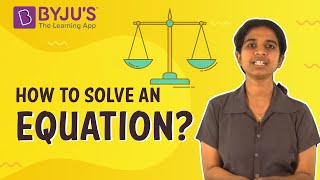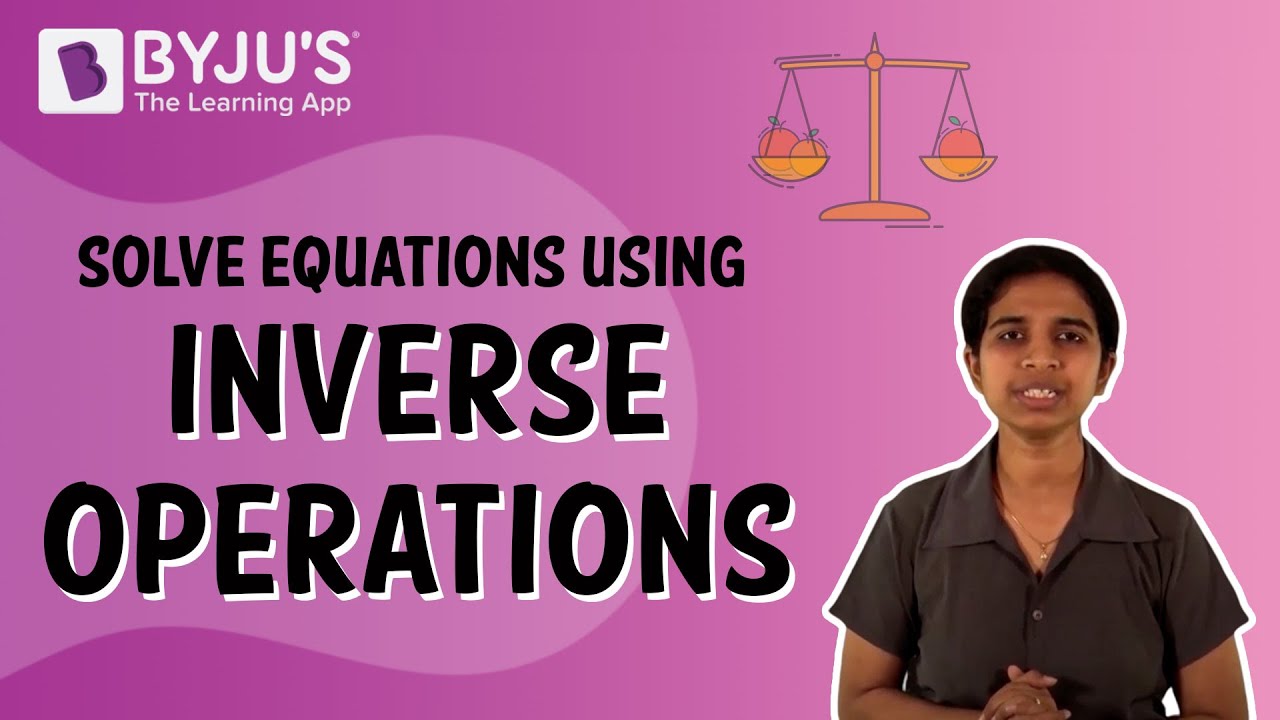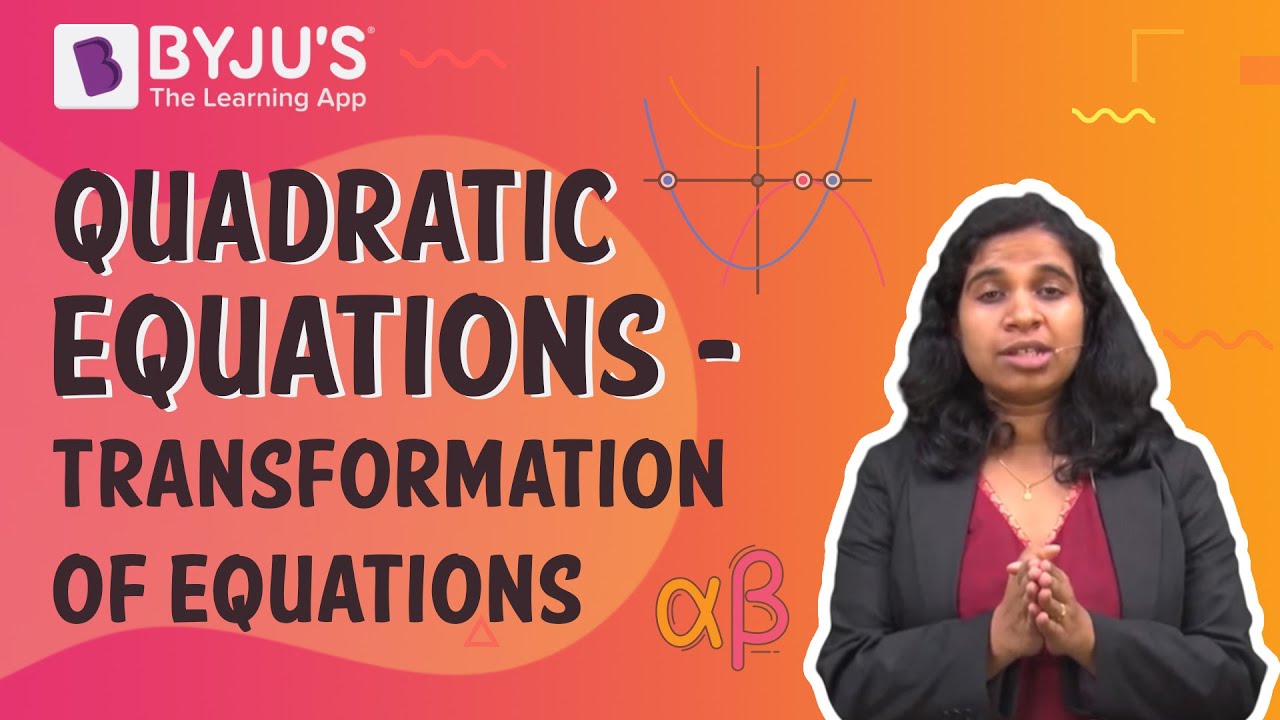Solved equations questions are given here for students to solve and practice solving different types of equations. An equation is a statement which shows the equality of two expressions. 
In mathematics, we deal with various types of equations linear equations, quadratic equations, cubic equations, biquadratic equations, differential equations (in calculus), etc. We often require an equation to find the value of some unknown quantity, to establish a rule, to represent any curve etc.
Learn more about equations.
Here we will mainly practice solving linear equations and word problems on linear equations.
Video Lesson on Solving Equations

Equations Questions With Solutions
Let us practice solving equations with these questions given below.
Question 1: Solve the following equation:
x + 2 = 1/14
Solution:
We have x + 2 = 1/14
⇒ x = 1/14 – 2
⇒ x = –27/14
Question 2: Solve the following equation:
2/x + 13 = 21
Solution:
We have 2/x + 13 = 21
⇒ 2 + 13x = 21x
⇒ 21x – 13x = 2
⇒ 8x = 2
⇒ x = ¼
Question 3: Find five solutions of the following equation: 2/x + 3/y = 2; x ≠ 1.
Solution:
We have 2/x + 3/y = 2
⇒ 2y + 3x = 2xy
⇒ 2y(1 – x) = –3
⇒ y = 3/[2(x – 1)]; x ≠ 1
Now we get that x is the independent variable and y is the dependent. By putting different values for x we can find five different solutions to the given equation.
|
Value for x |
0 |
2 |
–1 |
½ |
– ½ |
|
Value for y |
–3/2 |
3/2 |
–¾ |
3 |
– 1 |
Question 4: Solve the equation 2x + 5y = 4 such that sum of x and y is 7.
Solution:
We have to solve the equation 2x + 5y = 4, with constraint that x + y = 7 ⇒ x = 7 – y
Substituting this value of x in the given equation, we get
2(7 – y) + 5y = 4
⇒ 14 – 2y + 5y = 4
⇒ 3y = –10
⇒ y = –10/3
Then x = 7 – ( –10/3) = (21 + 10)/3 = 31/3.
∴ the value of x = 31/3 and y = –10/3.
Question 5: Solve the following system of equations:
5/x + 4/y = 22
3/x + 2/y = 12
Solution:
Let 1/x = u and 1/y = v, then the given equations transform into
5u + 4v = 22 ….(i)
3u + 2v = 11 ….(ii)
Multiply equation (ii) by 2 on both sides then subtract from (i), we get
(5u – 6u) + (4v – 4v) = 22 – 24
⇒ –u = –2
⇒ u = 2 and so x = 1/u = ½
Now with value of u, we get v = 3 ⇒ y = ⅓
Thus the solution of the given system of equations is (½, ⅓).
Also Read:
- Linear Equations in Two Variables
- Simultaneous Equations.
- Consistency and Inconsistency of System of Linear Equations
- Methods of Solving System of Linear Equations
Question 6: Find the area of a isosceles right triangle, whose perimeter is 20.484 cm. (Use √2 = 1.414)
Solution:
Let triangle ABC be the right isosceles triangle, right-angled at B whose equal sides are of length ‘a’.
Then AC = √(AB2. + BC2) = √(a2.+ a2) = a√2
Perimeter of triangle = a + a + a√2 = 20.484
On solving the equation, we get
2a + a × 1.414 = 20.484
⇒ 3.414 a = 20.484
⇒ a = 20.484/3.414 = 6
Area of triangle = ½ × a2. = ½ × 62.= 18 cm2.
Question 7: Find the area of the circle whose semi-circular perimeter is 72 cm.
Solution:
Let r be the radius of the circle, then
Semi-circular perimeter = 𝜋r + 2r = 72 cm
On solving the equation, we get,
22r/7 + 2r = 72
⇒ r(22/7 + 2) = 72
⇒ r(36/7) = 72
⇒ r = (72 × 7)/36 = 14 cm.
Area of circle = 𝜋r2 = 22/7 × 142 = 616 cm2.
Question 8: The present age of a father is three times the present age of his son. After 10 years, the age of the father will be five more than twice the age of his son. Find the present ages of father and son.
Solution:
Let the present age of the son be x and the age of the father be y.
Given y = 3x ….(i)
After 10 years,
y + 10 = 2(x + 10) + 5 ….(ii)
Solving equation (ii) by substituting the value of y from (i),
3x + 10 = 2(x + 10) + 5
⇒ x = 25 – 10 = 15
∴ the present age of son is 15 years and the present age of the father is 3 × 15 = 30 years.
Question 9: A train is running at a speed of 48 km/hr crosses a pole in half minute. Find the length of the train.
Solution:
Let the length of the train be l. Then the distance covered by the train in 0.5 is equal to the length of the train.
Speed of train = 48 km/hr = (48 × 1000)/60 m/min = 800 m/min
But, x/0.5 = 800
⇒ x = 800 × 0.5 = 400 m
∴ the length of the train is 400 m.
Question 10: Aman has ₹ 1, ₹ 2 and ₹ 5 coins in the ratio 1 : 2 : 3, respectively, such that the total amount he has is ₹ 200. Find the number of coins of each denomination he has?
Solution:
Let the number of ₹ 1, ₹ 2 and ₹ 5 coins be x, 2x and 3x, respectively.
Now x + 2.2x + 5.3x = 200
⇒ x + 4x + 15x = 200
⇒ 20x = 200
⇒ x = 10
Number of ₹ 1 coins = 10
Number of ₹ 2 coins = 20
Number of ₹ 5 coins = 30.
Recommended Videos on Equations


Related Articles |
|
Practice Questions on Equations
1. Solve the following equations for x:
(i) 2 + 3x = x – 4
(ii) 3/(5 – x) = 1/(5x + 8)
(iii) 12x + 4 = 2x
(iv) 1/(√2x +1) = √3
2. Find three solutions of the following equations:
(i) 2y = x + ½
(ii) y = x2 + 4
(iii) 2x + 3y = ¼
(iv) 2/x + 3/y = 0
3. Find the solution of x for the following equations:
(i) x2 + 2x + 1 = 2
(ii) √3x2 + (√6 – 5)x = 5√2
4. Find the area of a circle whose perimeter is 240 cm.
Keep visiting BYJU’S to get more such Maths lessons in a simple, concise and easy to understand way. Also, register at BYJU’S – The Learning App to get complete assistance for Maths preparation with video lessons, notes, tips and other study materials.

Comments